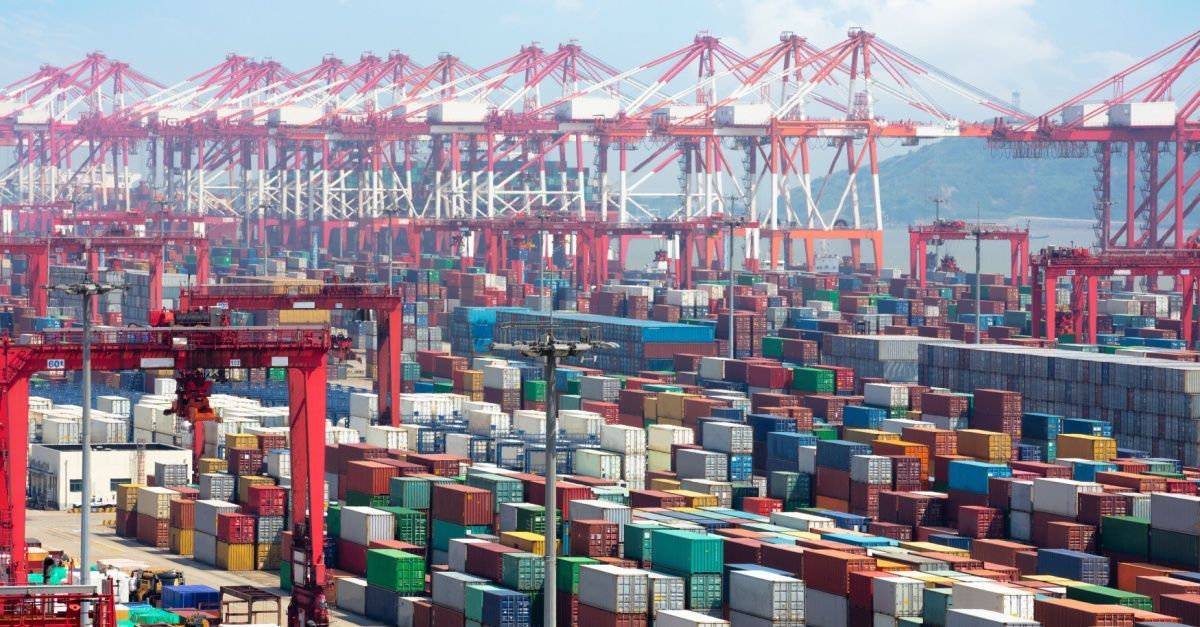US Manufacturing on Road to Recovery Amid Tariffs Threats
Blog Post CTA
The trucking industry and the freight world are gearing up for a new Trump presidency. While some experts believe tariffs would help increase domestic manufacturing, leading to more trucking moves, others contend that tariffs can harm the economy and reduce overall freight needs.
The pandemic exposed a lot of supply chains across the U.S. and the world at large. The devastating disruptions from then still have some ripple effects to this day. However, learning from mistakes is what makes or breaks any business. To that effect, experts and business leaders gathered at
The Transportation Research Board’s 104th annual meeting to discuss the impacts of the pandemic and present supply chain vulnerabilities and strategies for going forward, especially in a year that is set to see an escalation in
international trade policy wars.
Continue reading as we discuss some of the best topics, news, and trends in the freight world.
Manufacturing Sector Shows Signs of Recovery Amid Challenges
According to the Institute for Supply Management’s Purchasing Managers Index (PMI), the U.S. manufacturing sector ended 2024 with improved demand and production, rising as much as 49.3% in December. New orders and output climbed above growth thresholds, setting the stage for potential expansion in 2025.
Seven industries, including primary metals, electrical equipment, and plastics, reported growth during the manufacturing sector’s recovery. Concerns over potential tariff hikes have prompted manufacturers to explore alternative sourcing strategies. While tariff impacts are expected later in the year, cautious optimism remains over regulatory changes under the incoming administration.
S&P Global’s PMI painted a
slightly less optimistic picture, declining to 49.4 on the index due to drops in demand and production. Rising costs for raw materials like aluminum and copper added to challenges, although manufacturers anticipate improved employment and supply chain activity as demand increases in the coming months.
Building Resilient Supply Chains by Learning from Past Disruptions
The Transportation Research Board’s 104th annual meeting highlighted the importance of preparing supply chains for future disasters and catastrophic events. Panelists emphasized that while disasters often allow local resources to respond within days, catastrophes overwhelm local capacity, requiring stronger preparedness measures.
Speakers discussed how the
pandemic exposed vulnerabilities in global logistics and prompted new strategies to mitigate disruptions. These include scenario-based exercises, pre-positioning vital supplies, and fostering collaboration among ports, rail, and trucking systems. They also discussed the need for diversified port use, better infrastructure, and unified policies across jurisdictions.
From handling labor strikes to addressing extreme weather impacts, experts stressed the importance of proactive planning, innovation, and balancing economic considerations with long-term resilience. As global supply chains face rising pressures, stakeholders must prioritize flexibility and coordination to navigate future challenges effectively.
Biden Administration Adjusts Rules for Hydrogen Tax Credit to Boost Domestic Production
The Biden administration has revised rules governing a key tax credit for hydrogen production, addressing concerns from industry stakeholders. The updated guidelines, released by the Treasury Department, aim to support domestic hydrogen manufacturing while maintaining environmental standards.
Changes include extended timelines for clean energy alignment with hydrogen production, expanded eligibility for certain nuclear power plants, and allowances for hydrogen produced from natural gas using carbon capture. Renewable natural gas from sources like wastewater, animal manure, and coal mines also qualifies.
The credit, offering up to $3 per kilogram, is designed to promote hydrogen as a cleaner alternative for industries such as steelmaking and heavy transportation. Developers and companies welcomed the revisions, which they see as critical for advancing U.S. leadership in hydrogen energy.
Amazon Reaches Settlement with OSHA over Workplace Safety
Amazon and the Occupational Safety and Health Administration (OSHA) have reached a settlement addressing allegations of ergonomic risks and workplace safety issues at the company’s facilities. This agreement concludes a multisite investigation spanning over a decade and resolves 10 cases previously set to go to trial next year.
Amazon has agreed to improve policies at a facility in Illinois cited for handling bulky items and will allow OSHA monitoring inspections at several locations. The company also accepted more than 90% of the penalties related to the citations. OSHA withdrew most ergonomic citations but clarified that some withdrawals were influenced by an ongoing investigation by the U.S. Attorney’s Office for the Southern District of New York.
The settlement requires Amazon to implement
corporatewide ergonomic improvements
across its warehouses. This comes amid increased scrutiny of working conditions, with recent strikes by unionized workers and a Senate report criticizing Amazon’s warehouse safety practices. Amazon has contested these claims, describing the report as outdated and misleading.
Shifts in Trucking Spot Rates Might Reflect Market Recovery
National trucking spot rates have shown varied movements across equipment types in recent months. Dry van rates have steadily increased, especially in December, with consecutive weekly gains and higher year-over-year averages. Reefer and flatbed rates have fluctuated, reflecting seasonal and regional factors such as holiday demand and hurricane impacts.
Capacity constraints, changes in load volumes, and external disruptions like strikes and weather events have influenced these shifts. The market is experiencing signs of recovery from prolonged contraction, with recent data hinting at a new freight cycle. Frequent updates on these rates provide a window into evolving market conditions.
Record Highway Congestion Costs Impact US Trucking in 2022
The American Transportation Research Institute (ATRI) reported that highway congestion imposed a record $108.8 billion burden on the trucking industry in 2022. This figure represents a 15% rise from the previous high of $94.6 billion in 2021, despite a slight reduction in total congestion hours, which fell by 5.4% due to a slowing freight market.
Key contributors to the surge included higher operational costs driven by increased diesel prices, supply chain disruptions affecting vehicle production and maintenance, and rising labor expenses. ATRI noted that each registered combination truck incurred an average congestion-related cost of $7,588, equivalent to 430,000 truck drivers idling for an entire work year.
Congestion also led to the waste of more than 6.4 billion gallons of diesel, adding
$32.1 billion in fuel costs and generating significant environmental impacts, including 65.4 million metric tons of additional carbon dioxide emissions. The most affected areas included major metropolitan hubs like New York City, Miami, and Chicago, with smaller cities such as New Orleans, Buffalo, New York, and El Paso, Texas, experiencing sharp increases in congestion-related costs due to trade growth following the pandemic.
Although federal, state, and local governments allocated $232 billion to highway infrastructure in 2022, ATRI questioned whether these investments effectively targeted the most critical congestion hotspots. This suggests better prioritization in infrastructure planning.
2025 Trucking Conferences: Your Guide to Key Industry Events
Industry conferences remain a cornerstone for trucking professionals seeking to stay informed, connected, and competitive. These events bring together executives, analysts, and investors, offering opportunities for networking, learning, and collaboration.
The lineup of trucking conferences in 2025 includes events across the country, from
SMC³’s deep dive into LTL strategies to ATA’s premier gathering for trucking leaders. Highlights from the conferences will include sessions on artificial intelligence, alternative fuels, safety innovations, and hands-on experiences with the latest equipment.
Whether you’re looking to explore emerging technologies, refine your strategies, or strengthen your industry connections, these conferences offer valuable opportunities to engage with peers and leaders shaping the future of trucking.
Navigate Truck Rates and Financials with Entourage Freight Solutions
Trucking rates are treading around historic lows. While this can seem like good news for shippers looking to contract their freight or ship it via the spot market, it also means the market is somewhat unstable, and trucking carriers will do what they can to recoup costs and stay afloat.
Shippers need access to freight management services and real-time data to keep up with their shipments and stabilize in a volatile environment.
Entourage Freight Solutions provides steady services that help you navigate an ever-changing logistics environment and receive important information in real time.
Entourage Freight Solutions offers the following services and many more:
- Our LTL Service provides on-demand access to capacity, real-time data, and peace of mind in this high-stakes world.
- Our Freight Management lets your team stay organized across inbound and outbound logistics, tracking market capacity and using automation notifications to keep everyone informed.
- Our Refrigerated Transport provides expertise in everything from finished goods to raw materials, ensuring products arrive on time and in top condition.
Request a quote today to see how Entourage Freight Solutions can help with your freight movement and other supply chain needs.









